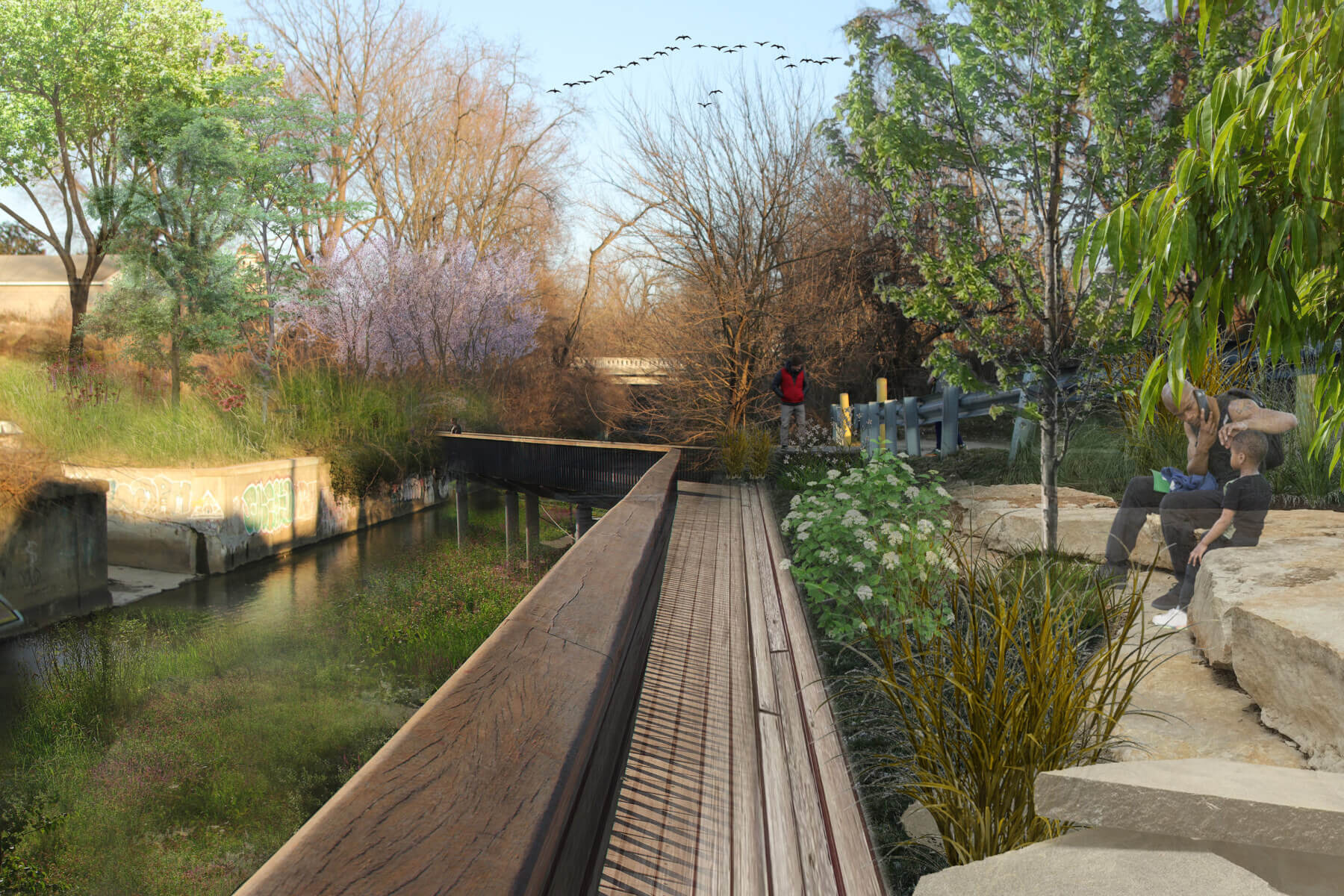Developing Guiding Goals
We developed three distinct goals to drive our design process. First, we needed to connect people to the creek, because if we ever want it to be healthy again people need to see it. Second, we had to improve the creek’s health for a safer, more vibrant water system. Lastly, we wanted to develop community destinations to give people an opportunity to engage with the water source.
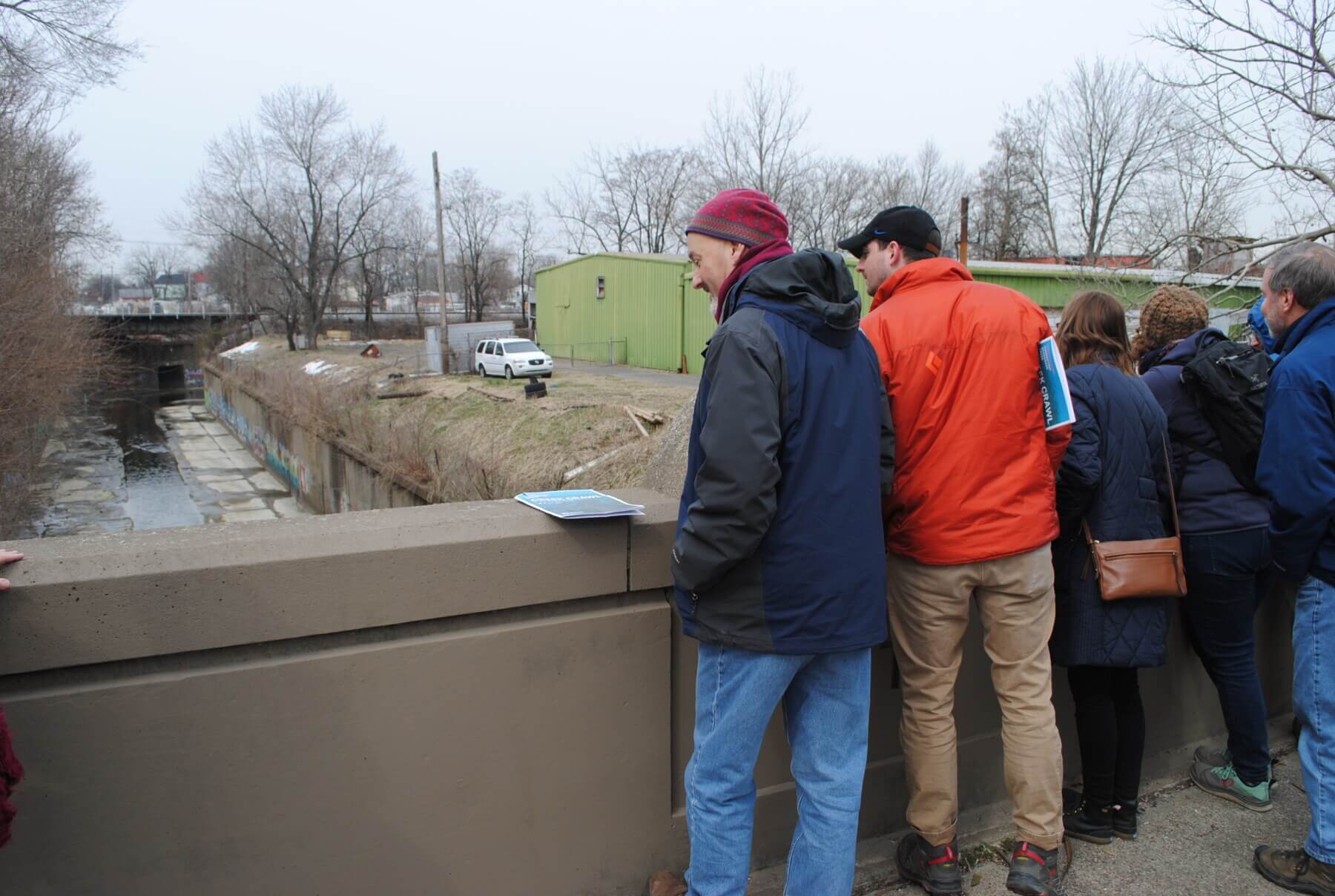
Gathering Insights
We kicked off our multi-day workshop with a “creek crawl” to gather knowledge and a visioning session to generate ideas. After walking nearly six miles along the stream bed, we learned that the city’s overabundance of impervious surfaces, such as roads and parking lots, as well as channelization efforts, were contributing to many of the creek’s issues. After collecting insights we covered a room-size map of the steam with hundreds of ideas for improvement.
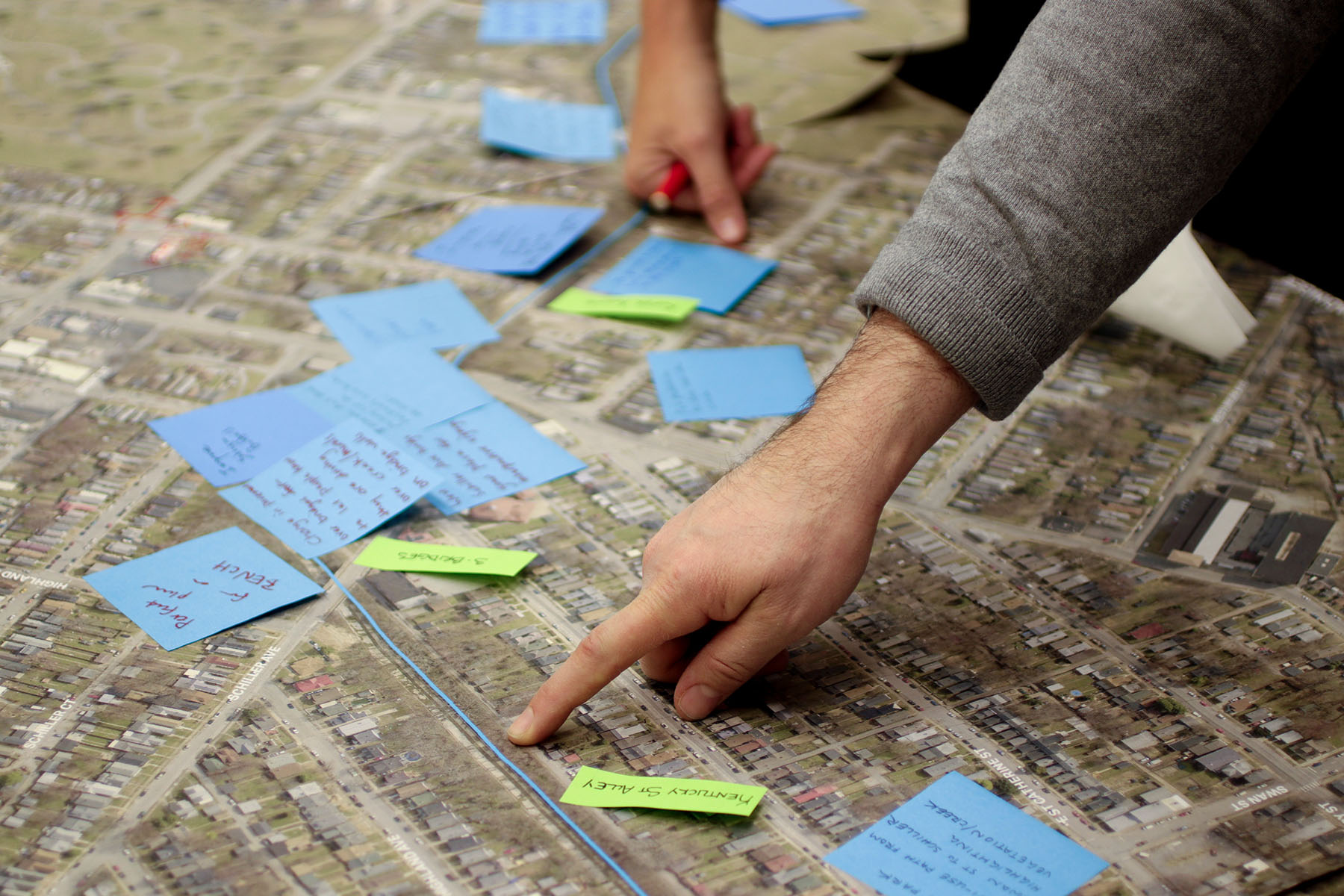
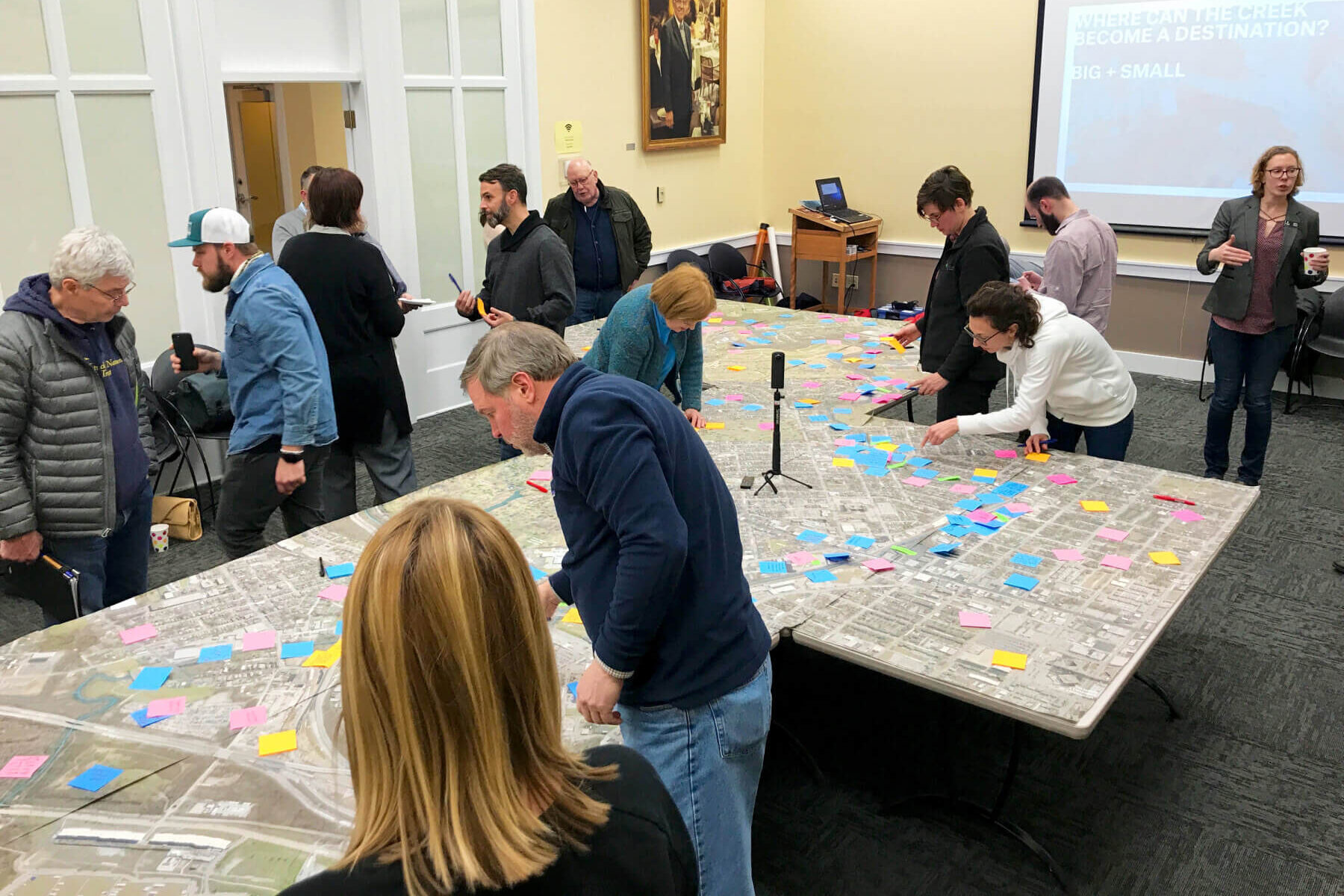
Digging into the Design
The following day we hosted an open studio, leaving our doors open and encouraging the public to stop by and ask questions, give feedback and engage in the design process. Live critiques improved our design, revealed important details and influenced the overall direction of the project.
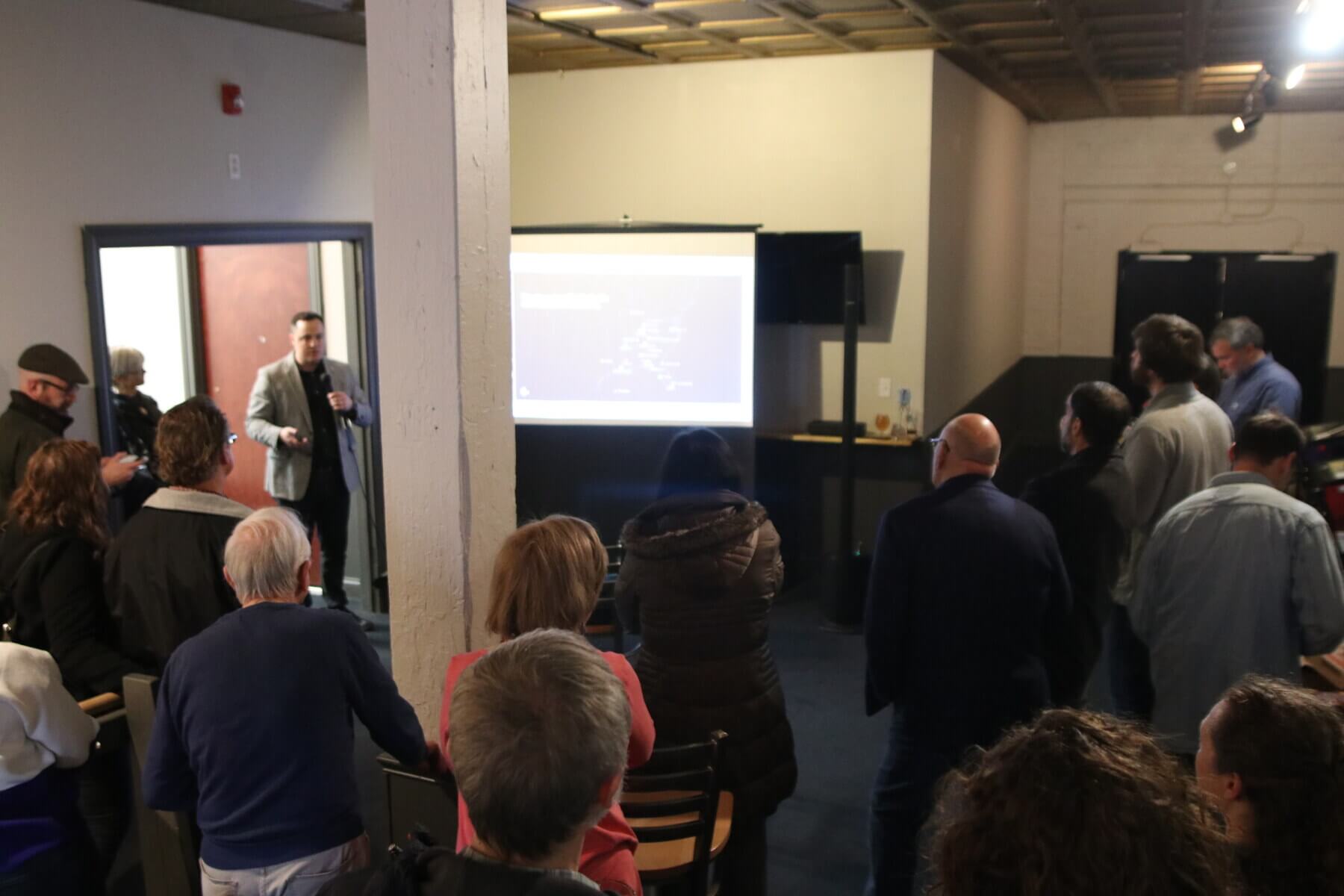
Presenting to the Public
On the third and final day we presented our plans to community members and civic leaders before discussing recommendations and plans for short, medium and long-term implementation. We showcased ideas both big and small, acknowledging that we were only just beginning a long journey to realizing our vision.
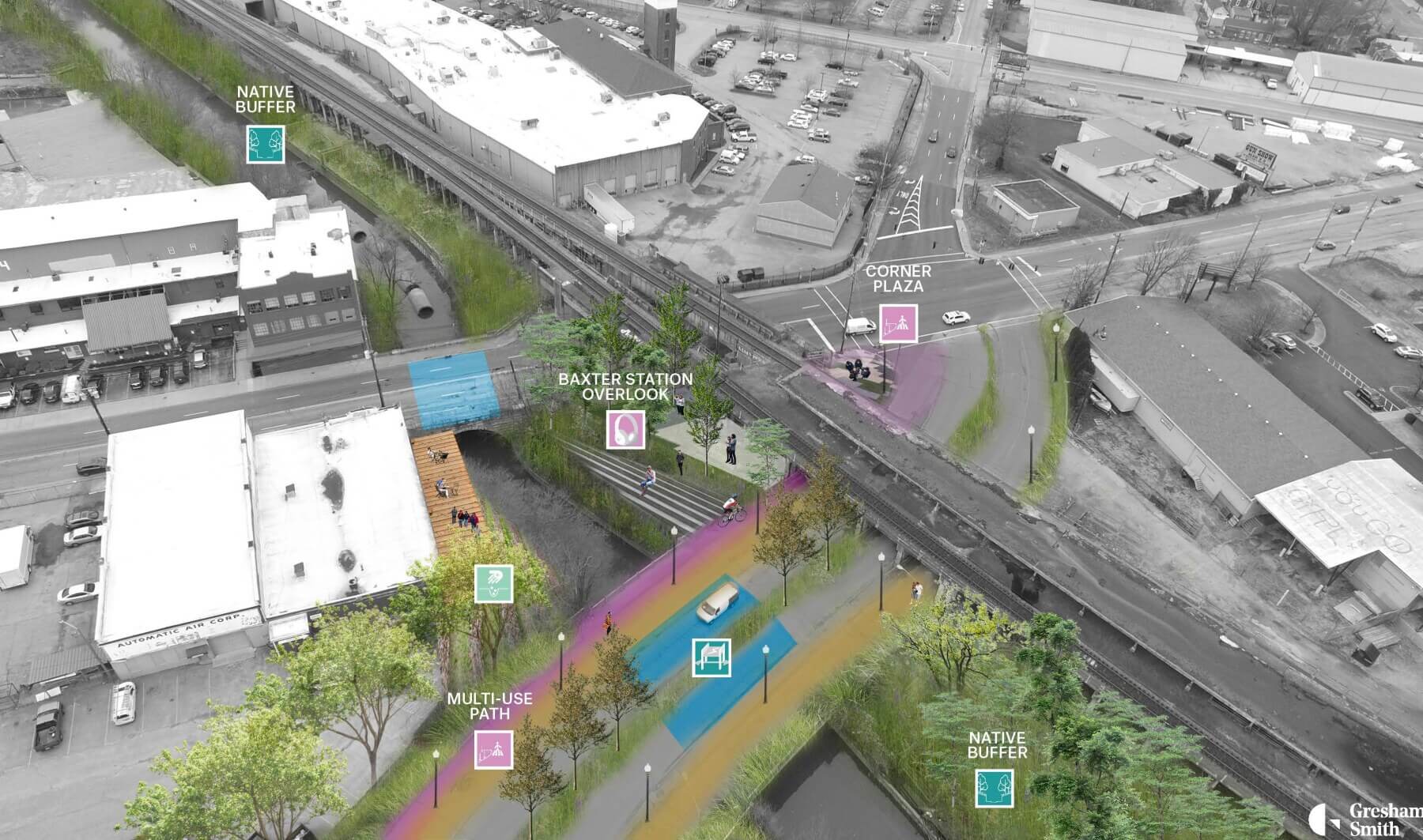
Planning for Action
We developed recommendations for eight site-specific projects to illustrate how incremental action items can help jump start larger efforts. Our ideas included reimaging a portion of Joe Creason Park, developing public space at several key intersections, creating a pocket park on Rufer Street and revitalizing the Kentucky Street Alley.
Joe Creason Park Vision
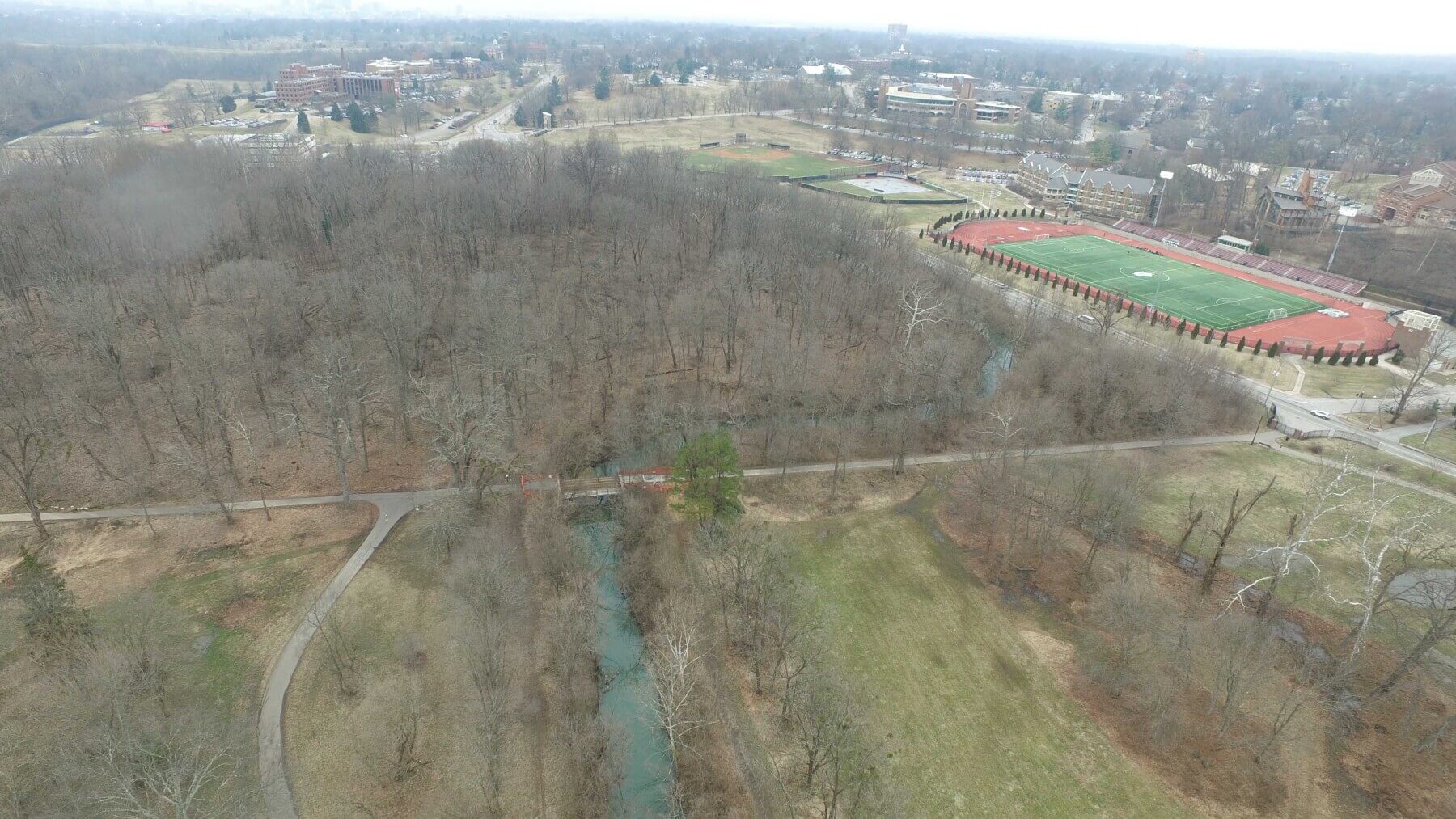
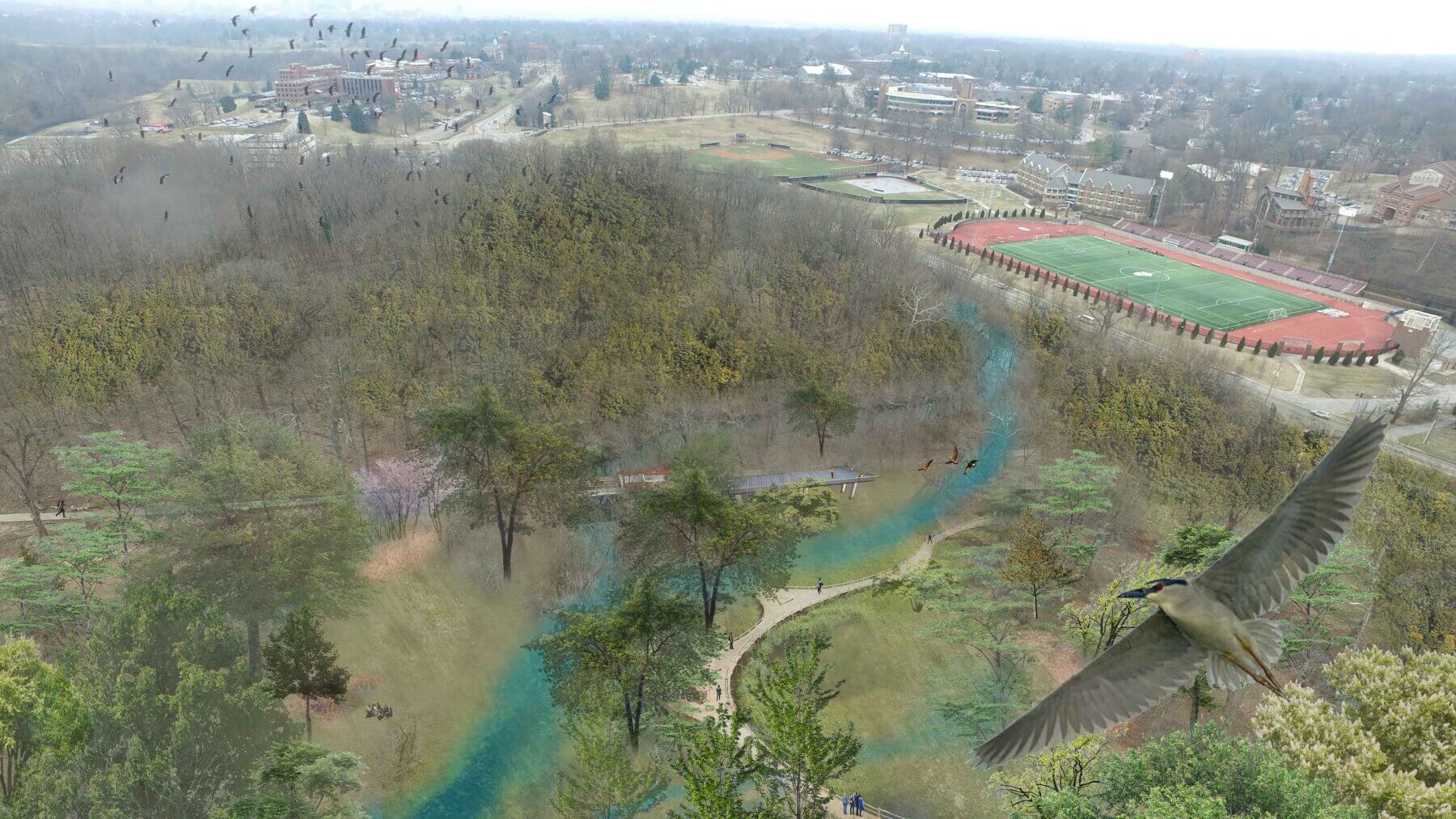
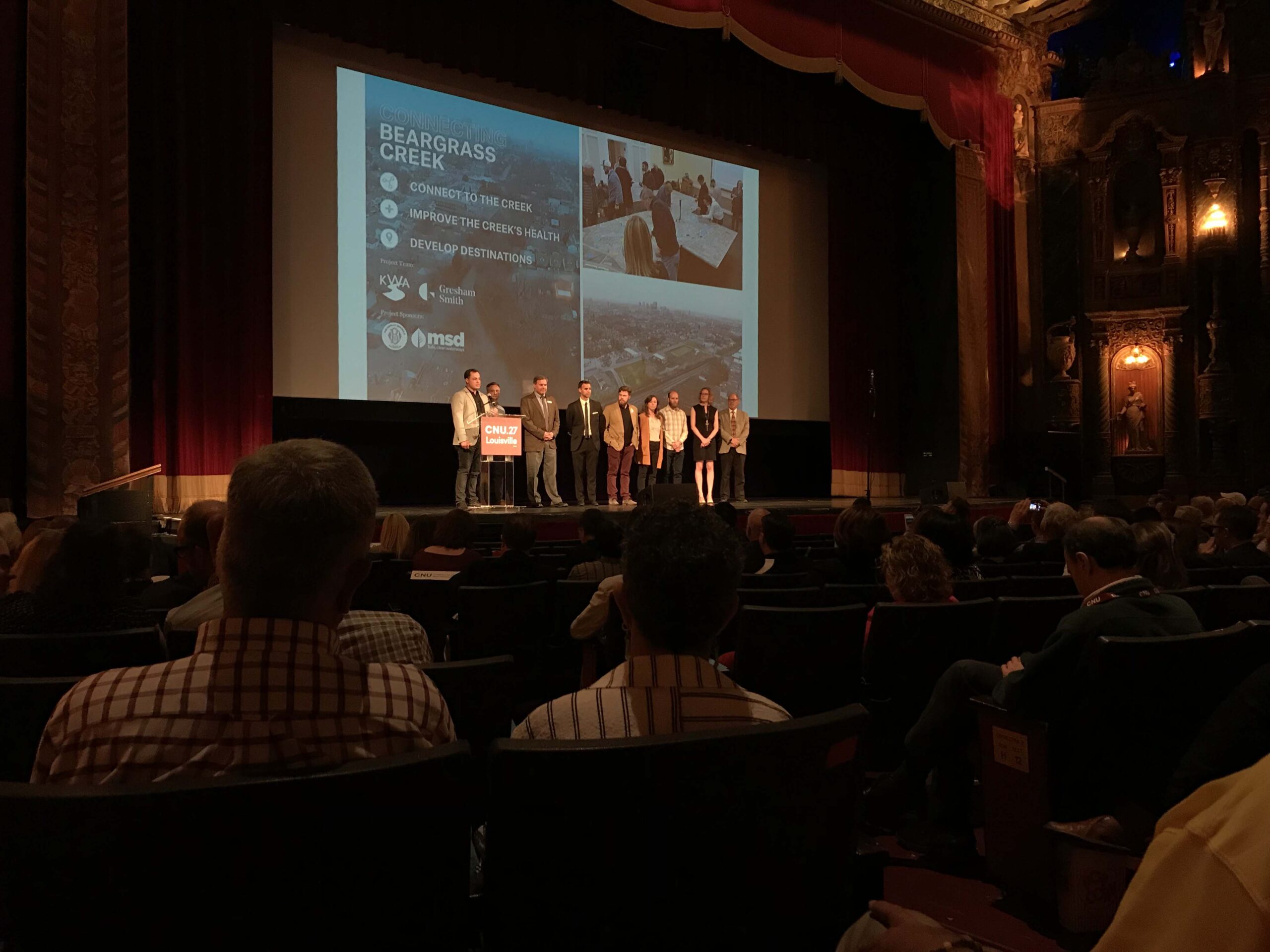
Bringing a Vision to Life
After our report was published, residents and local authorities began taking steps to improve Beargrass Creek. Metro Louisville is working to improve one of the identified problem intersections, a large planned development incorporated creek access into their design and a local landowner expressed interest in de-paving a large impervious area.
